
The Norwegian Institute of Technology was a science institute in Trondheim, Norway. It was established in 1910, and existed as an independent technical university for 58 years, after which it was merged into the University of Trondheim as an independent college.
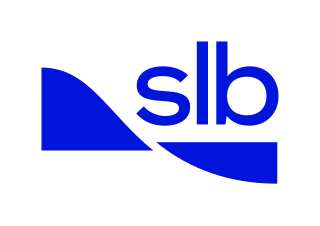
Schlumberger Limited, doing business as SLB, is an oilfield services company. As of 2022, it is both the world's largest offshore drilling company and the world's largest offshore drilling contractor by revenue.

Baker Hughes Company, organized in Delaware and headquartered in Houston, is one of the world's largest oil field services companies. The company provides products and services for oil well drilling, formation evaluation, completion, production, and reservoir consulting. It operates in over 120 countries, with research and manufacturing facilities in Australia, Singapore, Malaysia, India, Dubai, Saudi Arabia, Italy, Germany, Norway, Oklahoma, Louisiana and Missouri. From 2017 to 2020, the company was majority owned by General Electric (GE); however, GE no longer owns a material stake in the company.
Western Atlas was an oilfield services company formed in 1987 through the merger of Western Geophysical and Dresser Atlas. The resulting company was a joint venture of Litton and Dresser Industries until it was spun off as a publicly traded company in 1994.

WesternGeco is a geophysical services company. It is headquartered in Schlumberger House on the property of London Gatwick Airport in Crawley, West Sussex, in Greater London.

Reflection seismology is a method of exploration geophysics that uses the principles of seismology to estimate the properties of the Earth's subsurface from reflected seismic waves. The method requires a controlled seismic source of energy, such as dynamite or Tovex blast, a specialized air gun or a seismic vibrator. Reflection seismology is similar to sonar and echolocation. This article is about surface seismic surveys; for vertical seismic profiles, see VSP.

Geophysical Service Inc. was founded by John Clarence Karcher and Eugene McDermott in 1930 for the purpose of using refraction and reflection seismology to explore for petroleum deposits.
Western Geophysical was an international oil exploration company founded in California in 1933 by Henry Salvatori for the purpose of using reflection seismology to explore for petroleum.
China Oilfield Services (COSL) is an oilfield services company. It is a majority owned subsidiary of Chinese state owned company CNOOC Group. It also has a listed sister company in Hong Kong, CNOOC Limited.

Magnetotellurics (MT) is an electromagnetic geophysical method for inferring the earth's subsurface electrical conductivity from measurements of natural geomagnetic and geoelectric field variation at the Earth's surface.
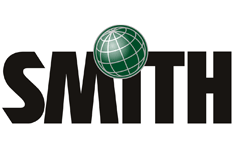
Smith International was a Fortune 500 company headquartered in the Greenspoint district and in unincorporated Harris County, Texas. Smith International ceased to exist as an independent company following the merger with Schlumberger. This company supplies products to gas and oil production and exploration companies. The company used to be identified by its red Sii logo. The company has recently changed its logo to consist of the word "SMITH" in black capital letters with a green globe.
Geosteering is the optimal placement of a wellbore based on the results of realtime downhole geological and geophysical logging measurements rather than three-dimensional targets in space. The objective is usually to keep a directional wellbore within a hydrocarbon pay zone defined in terms of its resistivity, density or even biostratigraphy. In mature areas, geosteering may be used to keep a wellbore in a particular reservoir section to minimize gas or water breakthrough and maximize economic production from the well. In the process of drilling a borehole, geosteering is the act of adjusting the borehole position on the fly to reach one or more geological targets. These changes are based on geological information gathered while drilling.

CGG SA (CGG) is a multinational geoscience technology services company that specializes on solving complex natural resource, environmental and infrastructure challenges.

Petrel is a software platform used in the exploration and production sector of the petroleum industry. It allows the user to interpret seismic data, perform well correlation, build reservoir models, visualize reservoir simulation results, calculate volumes, produce maps and design development strategies to maximize reservoir exploitation. Risk and uncertainty can be assessed throughout the life of the reservoir. Although some other oil servicing companies hire the services of this software, Petrel is developed and built by Schlumberger.
ION Geophysical provides acquisition of equipment, software, planning and seismic processing services, and provides seismic data libraries to the global oil & gas industry. The company's technologies and services are used by E&P operators and seismic acquisition contractors to generate high-resolution images of the subsurface of Earth during exploration, exploitation and production operations. Headquartered in Houston & Texas, ION has offices in the United States, Canada, Latin America, Europe, Africa, Russia, China and the Middle East.
Öz Yılmaz is the Chief Technology Officer of GeoTomo LLC and the founder of Anatolian Geophysical. He is the author of Seismic Data Processing and Seismic Data Analysis, the principle reference volumes for the seismic processing industry.
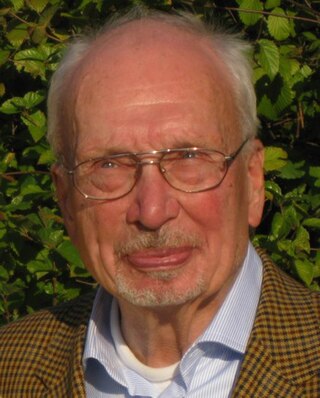
Reinhard Bortfeld was a German geophysicist.
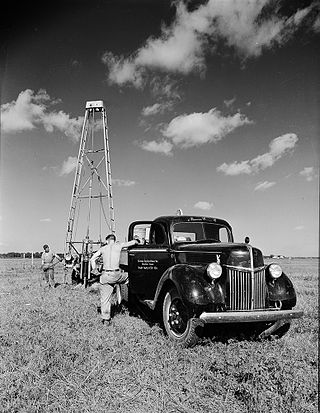
Seismic data acquisition is the first of the three distinct stages of seismic exploration, the other two being seismic data processing and seismic interpretation. Seismic acquisition requires the use of a seismic source at specified locations for a seismic survey, and the energy that travels within the subsurface as seismic waves generated by the source gets recorded at specified locations on the surface by what is known as receivers.
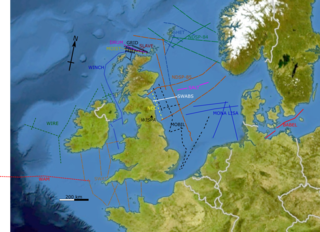
The British Institutions Reflection Profiling Syndicate, better known by its acronym BIRPS, was set up to acquire deep seismic reflection profiles around the United Kingdom Continental Shelf (UKCS). It was formed, initially as BURPS, the British Universities Reflection Profiling Syndicate, involving geophysicists from the Natural Environment Research Council (NERC) and British Universities. After the involvement of other institutions the name was changed to BIRPS and by February 1981 NERC had approved funding for a four-year programme. The next ten years saw the collection of 12,000 km of deep seismic profiles around the British Isles. By the time NERC stopped funding the program in 1997, more than 20,000 km of data had been acquired.













